'This has been a huge mental toll': Working moms still struggle a year into the pandemic
Moms are experiencing psychological distress, a report said.
The kitchen table has become more than just a place to eat dinner for Opal Foster and her 13-year-old son, Jeremiah, of Silver Spring, Maryland. It has also served as an office and a school for a year now.
Foster lost her job last March, joining the more than 2 million women who left the workforce in the U.S. over the course of 2020.
According to the National Women's Law Center, women have lost more than 5 million jobs since February 2020. Since the pandemic began, they’ve experienced nearly 54% of overall net job losses versus men. Some economic experts refer to this phenomenon as a “she-cession.”
Foster said she collected unemployment and was able to freelance until she was able to get a part-time job in December. All the while, she continued to work with Jeremiah to juggle remote learning. He has Down syndrome and requires extra help in class.
“In normal situations, you could reach out to somebody else and get assistance. We're kind of all in the same boat -- all stretched way thin,” Foster told ABC News.
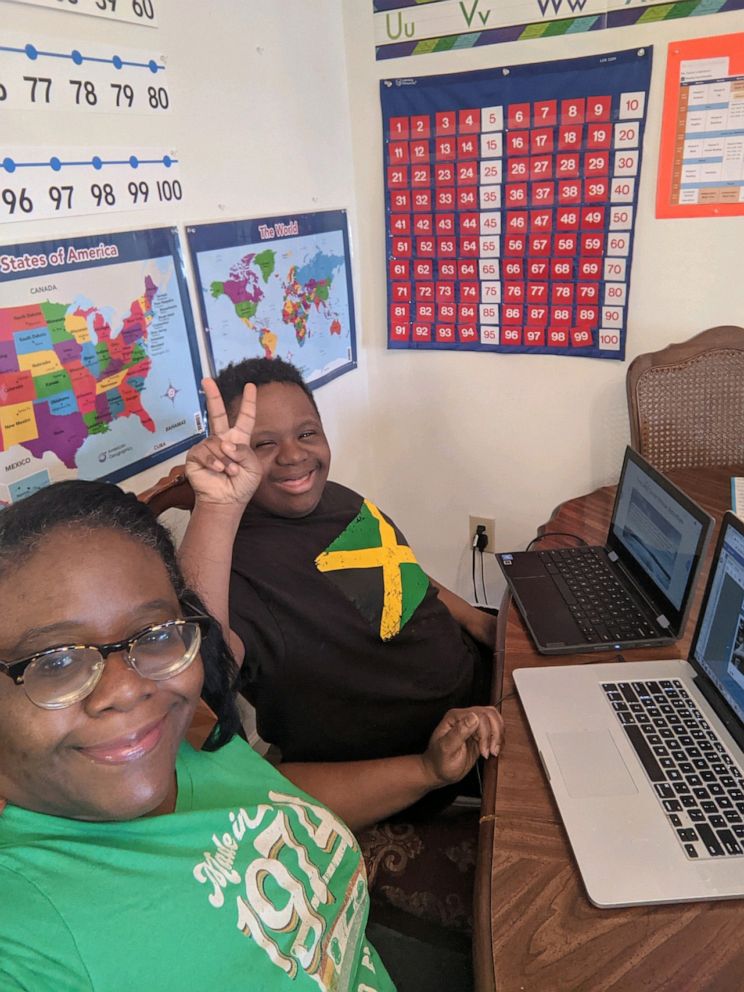
Foster is not alone. As the U.S. nears the one-year mark living with COVID-19 precautions, working moms are feeling the weight from the extended pressure.
According to a recent study by the University of Southern California, 44% of women said they were the sole provider of care for their children compared with 14% of men during the pandemic.
The study found that 42% of working mothers reduced their working hours between March and July 2020 versus 30% of men. When compared to households without children, there was no dramatic gender difference in working hours.
Moreover, the study showed nearly half of mothers surveyed experienced mild psychological distress. The percentage of mothers experiencing distress remained higher than men with children and both genders without children from March through July when the study was conducted.
“This new gap in psychological distress observed between mothers and women without school-age children appears to be driven by higher levels of psychological distress among mothers of elementary school-age and younger children,” the study's researchers said.
The study has not been published or peer reviewed.
“Many of [these women] are basically trying to do three peoples’ jobs,” Joan C. Williams, director of the Center for WorkLife Law at UC Hastings Law, told ABC News. “They’re doing their own job. They’re doing the childcare worker’s job. And they’re being a tech aid to their children’s teacher.”
She added, “Of course they’re stressed out beyond belief.”
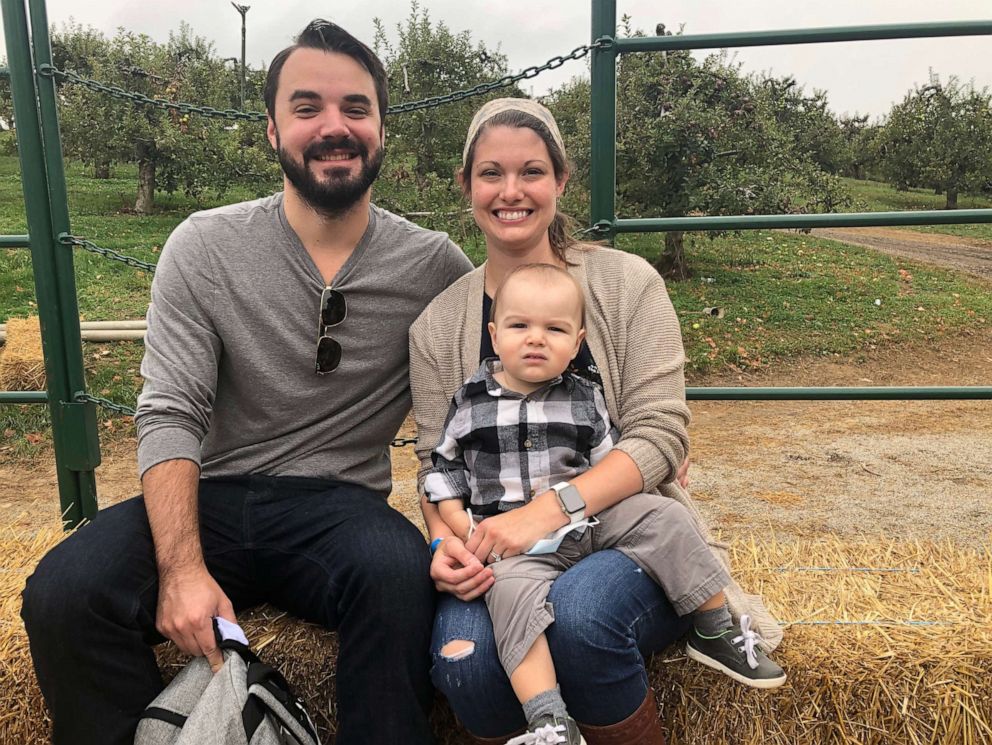
Since the pandemic began, Nicole Strauch of Canonsburg, Pennsylvania, has gone into work every day as an occupational therapist at a long-term care nursing home. Her husband works from home with her son and their nanny.
“I really kind of felt like a germ coming into the house,” she told ABC News. “I'd strip in the garage and shower and hope that I wasn't infecting my family.”
In December, the nightmare scenario happened: Her facility experienced an outbreak. She said over 90% of her patients contracted the coronavirus and more than 35 of them died.
“These are people I spend 40 hours a week with, every day,” she said. “I know their families. I know what they like for breakfast.”
She said the emotional toll of the outbreak was devastating.
“Trying to be a parent, but then also dealing with death constantly. It was the most trauma I've ever seen,” she recounted in tears.
She went on, “Just trying to care for dying people of COVID all day, not having anyone come into our house because I was around positive patients all the time, and then just trying to be a parent and feel like I'm failing my son because I can't play with him and I don't have the energy to be happy for him.”
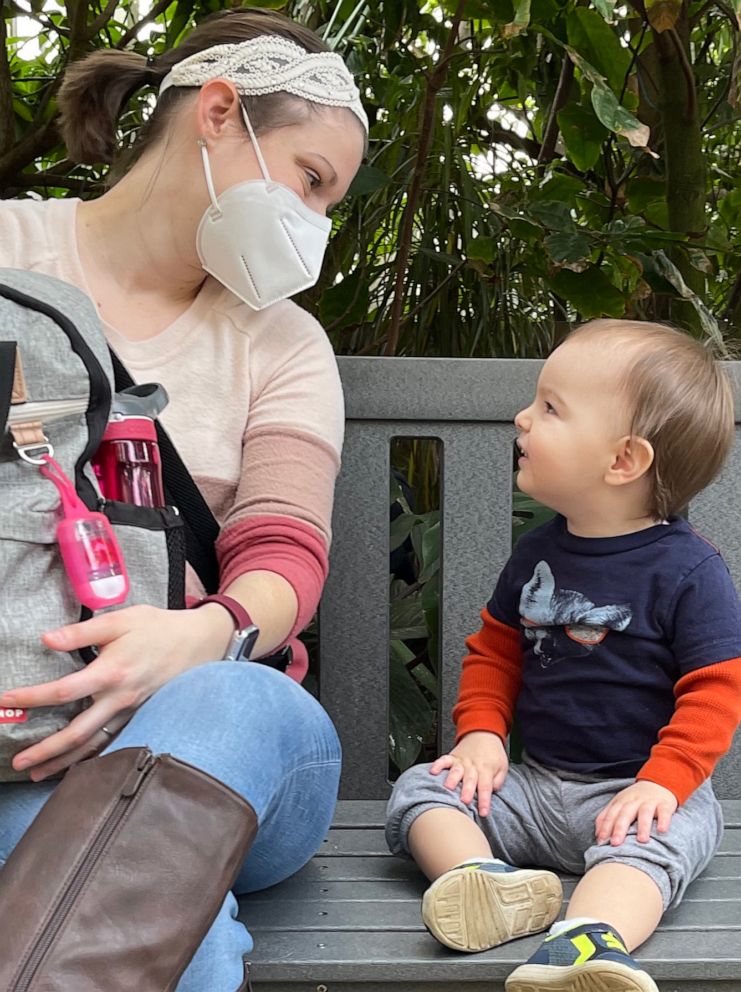
For Kristine Tague, balancing her work and life balance has been overwhelming.
“This has taken a huge mental toll on me,” Tague, who works as an airline industry technical illustrator in Texas, told ABC News. “The hardest thing is being OK and saying, ‘Yes, I need to take this break and it's OK.’”
Her toddler is in day care and her kindergartener attends in-person classes. Both institutions require students to quarantine if they’ve been exposed to the virus so she’s set up an area in her home office for them.
“Anytime there's an exposure, it's a quarantine of 14 days with the school district. So, basically I've had to take my children for tests, holding down my toddler, so that way he can get the nasal swab -- not fun,” she said.
In January, her husband tested positive for COVID-19 and had to quarantine in the guest room. As he recovered, Tague continued to work full-time while taking care of her toddler and helping her kindergartener with remote learning.
“Almost a year later, it’s surreal to me that it’s still going on,” she said. “I'm working on my resilience ... anytime I fail and cry and mess up, I just let myself do that. And I get back up again and keep going.”
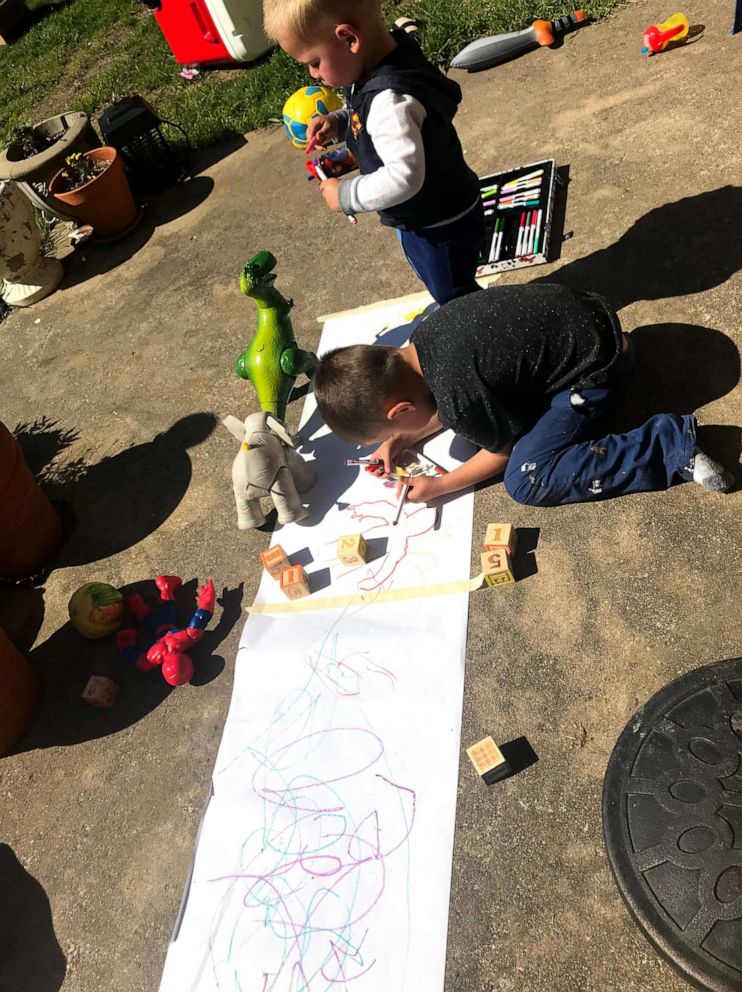
Tague said she feels fortunate that she and her husband have been able to keep their jobs, but there’s an anxiety about what the future may hold.
“I want there to be a place where my toddler gets to know what it's like to play with other kids … and not have to worry,” she said.
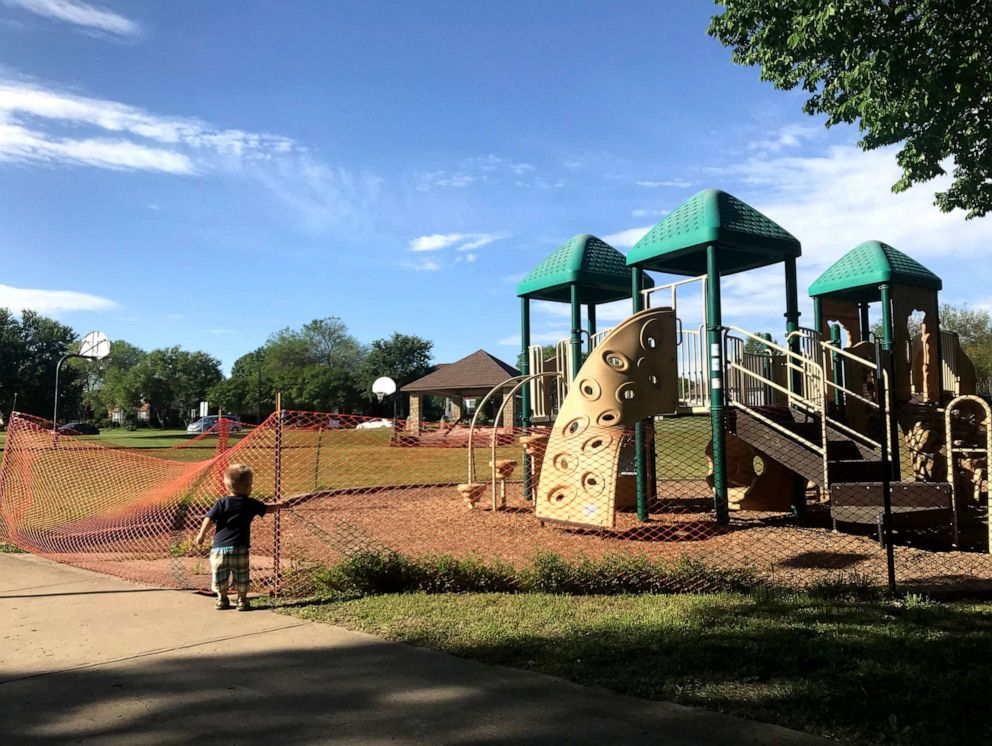
With nationwide vaccination efforts underway, Foster plans to keep marching forward the best she can, hoping relief from the stresses of the pandemic is somewhere on the horizon.
“I can't wait to get back to working just one job,” Foster said. “And letting that be my primary source of income instead of trying to make a dollar out of 15 cents.”



